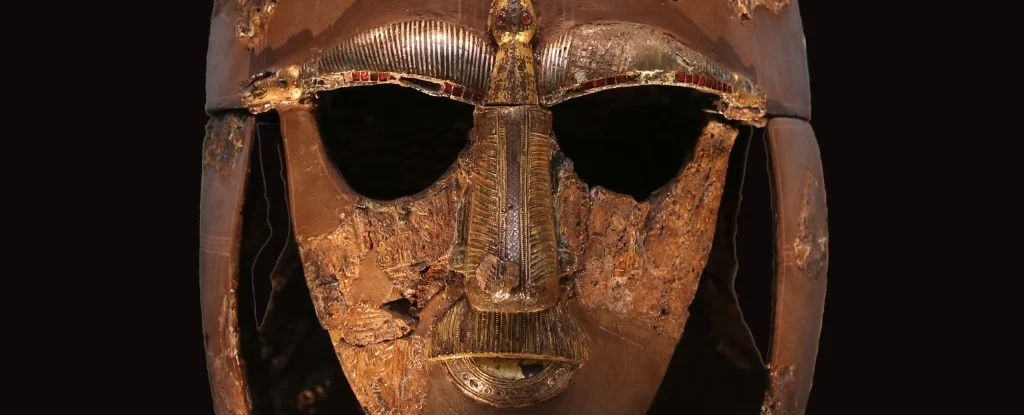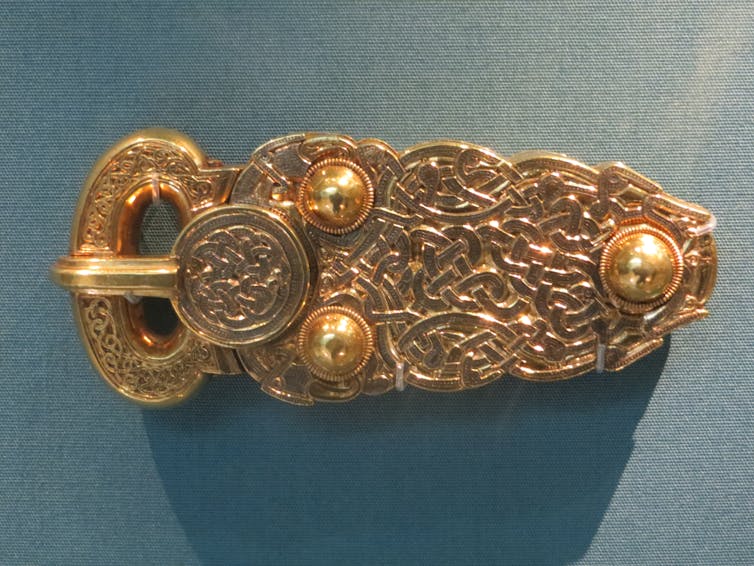Ancient tombs challenge our understanding of gender identity
- October 7, 2023
- 0
There are a significant number of Anglo-Saxon burials in which the presumed anatomical sex of the skeleton does not match the sex suggested by the objects with which
There are a significant number of Anglo-Saxon burials in which the presumed anatomical sex of the skeleton does not match the sex suggested by the objects with which

There are a significant number of Anglo-Saxon burials in which the presumed anatomical sex of the skeleton does not match the sex suggested by the objects with which they were buried. While some bodies identified as men were buried in women’s clothing, some bodies identified as women were found in “warrior graves” generally associated with men.
In the archeology of early Anglo-Saxon England, weapons, equipment and riding implements are thought to represent masculinity, while jewellery, sewing materials and beads represent femininity. And mostly this model fits.
However, the fact that no convincing explanation has yet been provided for the funerals seems to reverse the situation. My PhD research asks whether examining these unusually gendered burials through the lens of trans theory and the 21st century language of ‘transness’ can improve historians’ understanding of early Anglo-Saxon gender.
Burials of atypical gender are often overlooked as “outliers” in excavation reports and subsequent research. This is based on the anachronistic idea that historical societies followed a system of sex, gender, and sexuality consistent with 19th-century Western standards.
This idea is so common that many people believe that these three aspects of humanity have remained the same throughout history. However, such an approach may mean that there were aspects of the understanding of gender in early Anglo-Saxon England (c. AD 450-750) that are not recognized today. Using transgender studies approaches that recognize the potential of gender beyond the male-female binary in historical cultures allows researchers to approach these burials more critically.
Moreover, these graves and the lives of those buried in them are exceptionally included in meaningful historical research rather than being excluded from research.

Eleven fifth to eighth century burials found in a pre-Christian cemetery at Buckland, Dover, were marked as “inconsistencies” in reports of cemetery excavations. This was due to the assumed incompatibility between the gender of the skeleton and the gender relations of the objects with which it was buried.
This makes them a good place to start exploring the interpretation of these burials through the lens of transparency as a possible explanation for this “discrepancy.” A closer look at two of these tombs, Tomb 30 and Tomb 93, sheds light on the complexity of gender issues in this period.
The person living in grave number 30 was between 35 and 40 years old and was buried around 600 AD. that is, the excavation report identified him as “definitely male” based on the features of his skeleton. Grave number 30, at a depth of 0.61 meters, is particularly deep for this period. This indicates that they were individuals of high status, as the energy expended in digging a person’s grave reflects the respect the society had for them.
This is also suggested by one person who had five cavity problems as a result of a sugar-rich diet. The absence of enamel hypoplasia (horizontal stripes seen on teeth during periods of malnutrition) also indicates reliable access to food. The grave contained a bone comb, a silver-gilt brooch, a silver pin, 84 beads, a silver pendant, a buckle, a knife and a set of iron keys; this was a rich collection that emphasized their high status.
All of these elements are associated with femininity and are expected to be found in cisgender women’s graves (graves containing artifacts considered feminine accompanied by a female skeleton). For example, brooches and pins were part of women’s clothing in the seventh century.
We may never know exactly who this person was or how he fit into his community. But using a trans studies approach to burial, I would say that this could be interpreted as the grave of a wealthy trans woman who wore fine silver jewelry, ate as well as her contemporaries, and proudly wore large iron keys to the house. she ran she
According to estimates, the person in “Tomb 93” died between the ages of 35 and 40. In the excavation report, they were described as “probably female” because their poor preservation did not give full confidence. Although grave 93 is not as deep as grave 30, it is still large. There is evidence that dental caries, known as “occlusal cracks,” are often caused or exacerbated by feminizing hormones, especially during pregnancy. This evidence supports
We label the skeleton as female, but do not discount the transcription as an explanation for this burial in light of the accompanying artifacts.
This person was buried next to a sword, a spearhead, fragments of an ornate shield, a glass bead (possibly attached to a sword), an iron rod, a bronze band, fragments of an iron buckle, and a bronze ring.
Thanks to the sword, it is one of the 17 graves excavated in the cemetery where such a high-status weapon was found. The combination of weapons is the archetype of the Anglo-Saxon “warrior’s grave”. Again, we can never be sure who this person is in life. Such a burial does not necessarily mean that the person is a warrior. However, this shows that they have a high status and operate in the male sphere.
A reading of the evidence for a transgender burial suggests that this could be interpreted as the burial of a transgender man who was respected in his society, displaying his wealth, courage, and possibly warrior status with his shield, sword, and spear.
There are other possible explanations for these burials. Perhaps the gun in grave 93 was a family heirloom buried with the last woman of that family, or perhaps it belonged to a “warrior woman” like Lagertha in the TV series Vikings.
Because there are so many variables and we cannot talk to the people at these funerals, any historical theories about gender during this period can only be speculative. The trans-exclusive interpretation of funerary evidence is no less selective; It operates from the same contemporary perspective as the trans-inclusive interpretation and requires at least as many assumptions.
Although trans-inclusive approaches cannot offer a clear explanation for burials that fall outside traditional Anglo-Saxon understandings of gender, the insights they offer are equally evidence-based. Bringing these “abnormal” burial practices out of the footnotes and into mainstream scholarship opens new perspectives in the oldest iteration of the English-speaking world. James Davison, PhD in Medieval History, University of Liverpool. Source
Source: Port Altele
As an experienced journalist and author, Mary has been reporting on the latest news and trends for over 5 years. With a passion for uncovering the stories behind the headlines, Mary has earned a reputation as a trusted voice in the world of journalism. Her writing style is insightful, engaging and thought-provoking, as she takes a deep dive into the most pressing issues of our time.